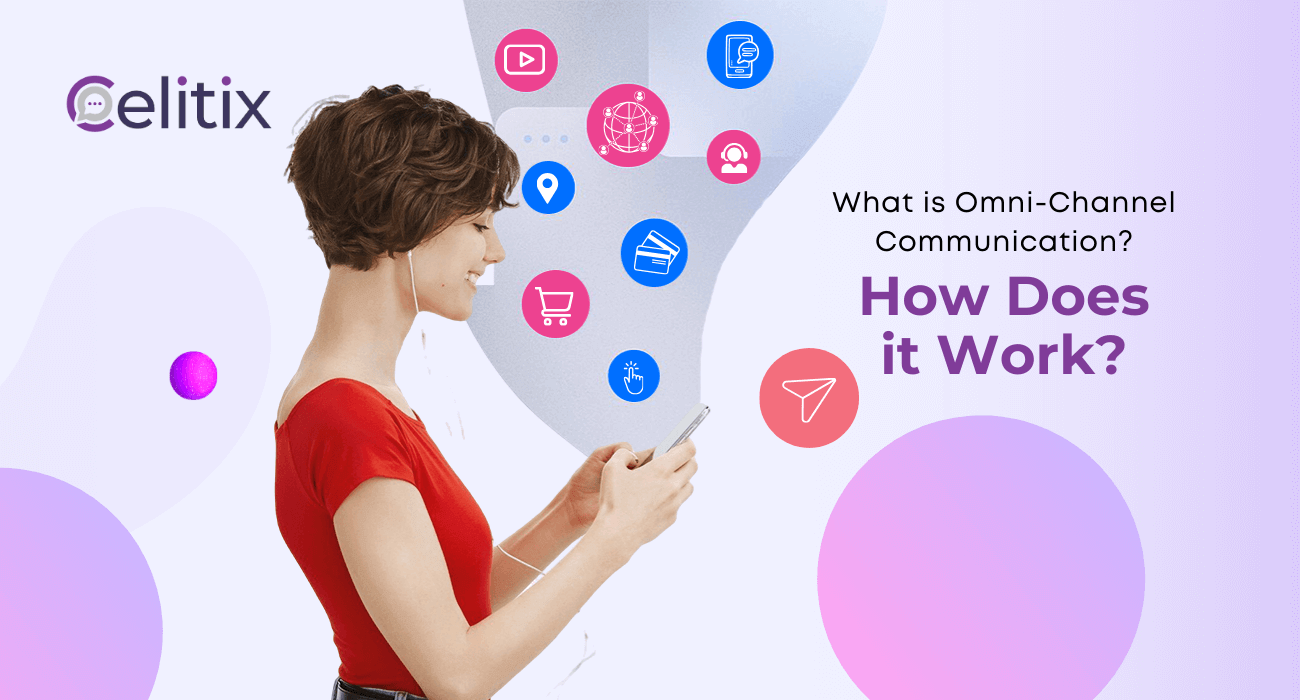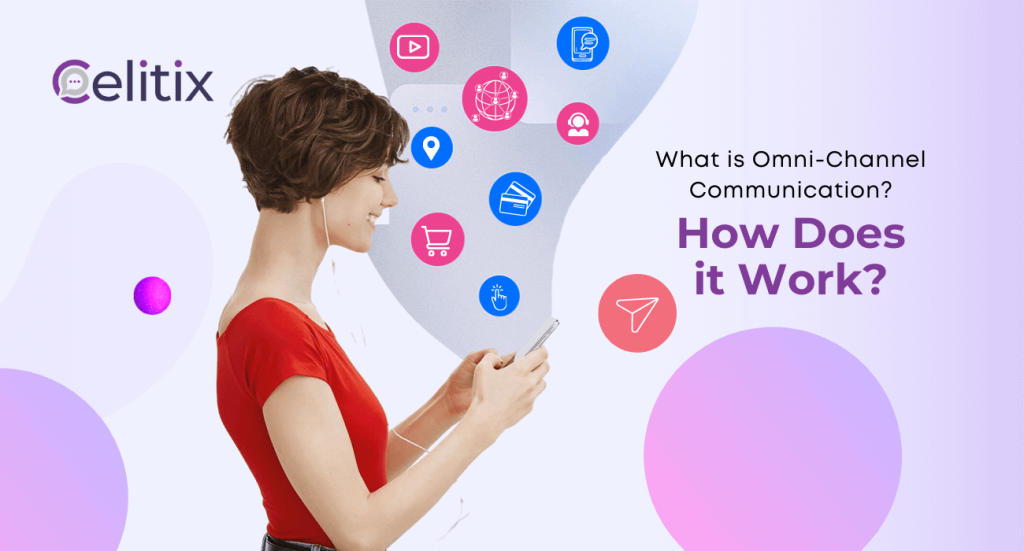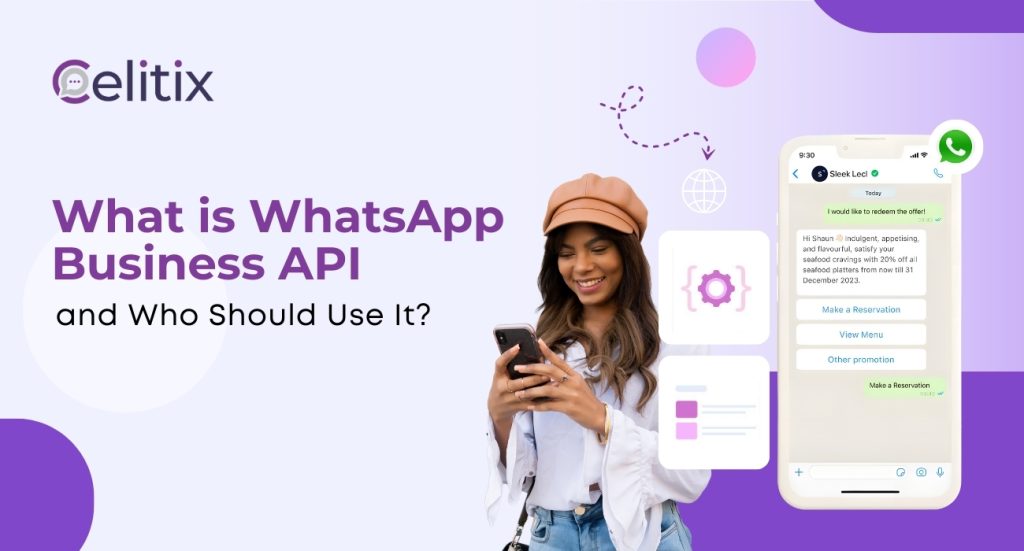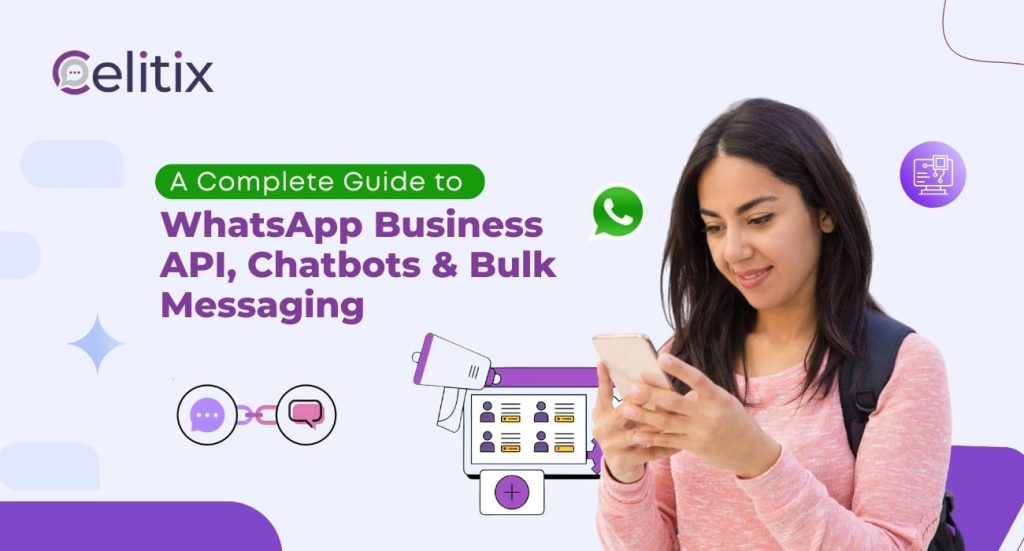Various omnichannel communication platforms have been launched for businesses in the past few years. “Omnichannel” has now become the hottest new buzzword in digital marketing circles, dethroning “Full Stack Funnel” from its tyrannical rule.
Celitix is another such platform, and we are the team behind it. Since we are already committed to building such a solution, we thought it best to share what we know about the subject. So, here’s the deal with this new buzzword:
What is Omni-Channel Communication?
Omni-channel communication is a system or framework that integrates all channels to create a seamless experience for its intended receiver. It’s defined by a focus on user experience.
Such an approach can be extremely beneficial for companies that leverage digital technology to scale their operations in e-commerce, health, service, real estate, hospitality, etc.
When a company uses a single unified communication platform to manage all its channels, like social media, email, SMS, WhatsApp, print ads, and more, from one place, we refer to such a software as a CPaaS (Communication Platform as a Service) Solution. An omnichannel communication platform is another catchy way to call a CPaaS solution, like Celitix.
Omni-Channel vs Multi-Channel Communication

Most companies take a broadcast approach to communication. They have something to say, and they bombard their customers with their message in every way possible.
In such cases, the company’s decision-makers form a hierarchy, placing themselves at the top, with all their communication channels below them. The customer is at the very bottom of this chain.
Treated as nothing more than passive receivers, the messages on this chain come from the top and reach the intended receivers as a kind of “take-it-or-leave-it” monologue-style offer.
This is a multi-channel approach, which employs various channels to get the message across to as many people as possible, but it is essentially a one-way street. The omnichannel approach is completely different.
Key Elements of an Omnichannel Communication Platform
The biggest feature of an omnichannel communication network is a CPaaS solution. Platforms like Celitix are at the heart of every major company’s connection with its audience.
Here are the core elements of an omnichannel communication platform:
- Unified Channels: All the company’s direct communication channels, in a single cloud-powered integrated dashboard.
- Data Integration: Centralised customer data for personalised communication.
- Consistent Messaging: Maintaining a unified brand message and tone across platforms.
How Does Omnichannel Communication Work?
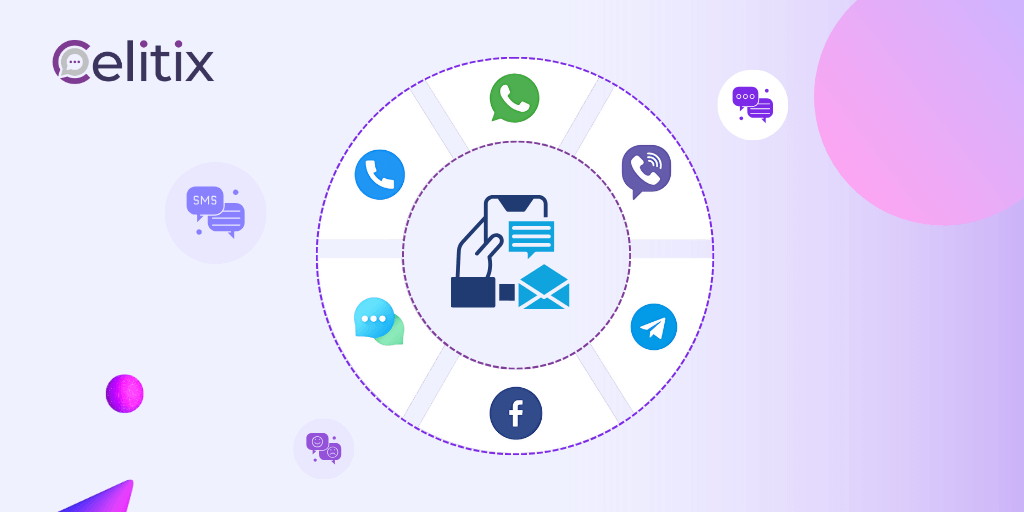
Omnichannel communication is all about strategy, results, and customers. It starts with a vision for the ideal customer journey & experience. Then, individual channels are built up in line with that vision.
The channels are integrated on an omnichannel communication platform like Celitix, and then the system goes live. Then comes feedback and iteration. From the customer’s perspective, they enjoy various options to engage with the brand in their preferred way at any time. It works in stages:
I. Awareness
First, they become aware of the brand through its online, promotional, or local efforts designed to delight people like them. Then, when they require the brand’s goods or services, they can engage with the company through various channels.
II. Engagement
Website, app, social media, email newsletter, or an in-store visit are just some options. This is the engagement stage, where the brand first establishes a relationship.
If handled properly, the customer chooses to stay in touch with the brand through their preferred channels by sharing how they can be reached. Everyone is different, but with omnichannel options, more people choose one they’re comfortable with.
This is where the omnichannel approach really diverges from a multichannel one. The latter would continue to contact the customer on their selected channel, but the former encourages engagement in various ways.
It’s not about more channels, it’s about strategically providing value to the customer in every way possible. This often comes in the form of value-driven content marketing, offers, promotions, sales, & more that are on-brand.
The crucial thing is to stick with a coherent set of brand values and consistently deliver short bursts of the promised value proposition. The core word here is strategy. Omnichannel focuses on strategy, whereas others focus on tactics.
III. Purchase
Finally, if and when the customer decides to make a purchase, they are then engaged through direct channels, connecting them to the brand’s CRM database and support funnels.
Celitix’s CPaaS solutions are essential at this stage for companies of various sizes. It helps them automate, scale, & standardise exceptional brand experiences and integrate their channels with customers & team members.
IV. Retention
Then the company’s brand representatives can focus on retaining their customers through feedback, personalised engagement and exceptional service. Of course, this process differs dramatically based on the industry and business model.
Yet the core tenets remain the same: strategy, automation, integration of multiple channels, and a focus on client/customer experience. Here’s an example of how omnichannel communication looks for an E-commerce Business:
- Prospective customers discover the brand’s products through targeted organic posting on social media, collabs, ads, comments, SEO listings, website, etc.
- They choose to engage, explore, or interact. The ideal responses are visiting the website, signing up for a newsletter, following on social media, etc.
- Abandoned cart recovery, personalised recommendations, & targeted promotions leverage data & traffic from multiple platforms, connecting them to core channels, like the brand’s website.
- Followers or new traffic make a purchase and share their personal information, after which you can engage them through direct channels.
- Then support, service, & delivery channels ensure retention and build loyalty.
The advantage of an Omnichannel presence here is that you can reach more people on different platforms, who find your link tree everywhere, and choose where they follow or engage.
Every channel interconnects and directs traffic to core communication channels where prospects can interact directly with the brand’s in-house teams.
Remember: Digital channels are the craze, but until & unless VR becomes mainstream, we all live primarily in the real world. Online channels are great for reach & connections, but conversions always happen in the real world.
Never neglect your physical presence for digital. Build your real-world connections through brick-and-mortar stores, outlets, events, & community meet-ups. Document & record that to supercharge your online results. Enjoy the profits.
Why Omnichannel Communication?
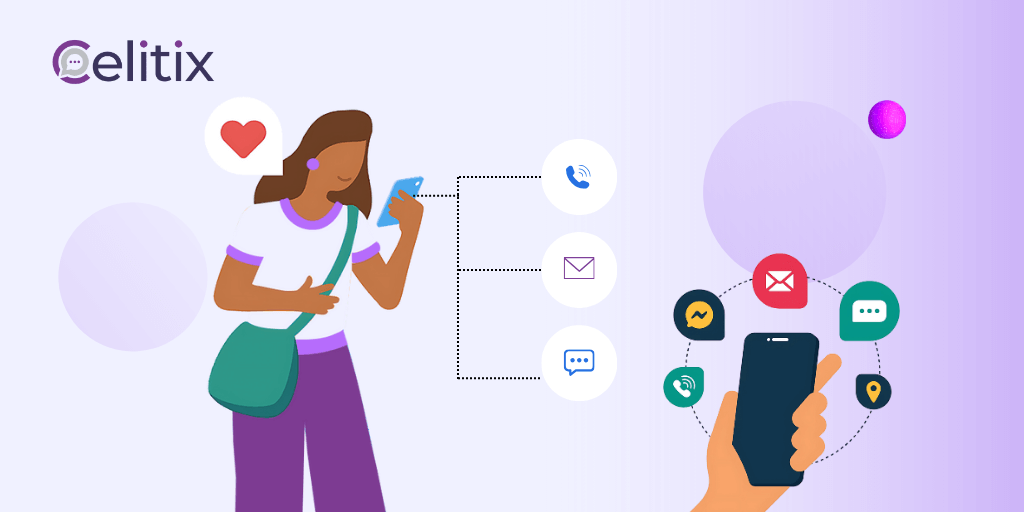
To give you an idea of what one needs to make their communication omnichannel, we can break down the core essentials of the framework into practical requirements. Let’s also look at this model’s bare minimum and world-class applications.
Market & Audience-Informed Strategy
First comes research & planning. Take a close look at your business model, its target audience, & past clients. Also, understand how your team does what it does. Then, look at your competition in the market.
Who are your products for? Get specific. Where does each of your target groups spend their time the most? Which channels do you want to leverage? How does your competition handle its marketing, sales, & support communication?
Make a brand strategy that differentiates and connects to resonate with your audience. A good communication strategy gives you the vision and awareness to execute a viable customer experience at the right cost.
- Minimum: Craft a brand that aligns with your reality & vision while balancing it with what the market wants. Pick your channels & scope based on your resources. Even a single Instagram page & WhatsApp can work well.
- World Class: Leverage the culture on every platform, connecting it with your brand and the intended audience. Build an outstanding platform and leverage tech like AI-gen Chatbots & AR to create delightful experiences. Integrate it all to create a seamless, consistent, & rich experience.
Setting Up The Channels
Sign up your own direct channels like mobile numbers, email, etc. Do all the necessary paperwork for your needs. Set up all your accounts, mimic your audience to personalise your ads & feeds, and prepare your team to lay a strong foundation.
One important thing is to scale your output along with your communication. If you can only handle 10-odd clients at a time, it won’t help you to get dozens of leads since conversion will be difficult.
Similarly, small teams should focus on nailing a few platforms and planning their communication channels according to their goals, needs, and budget.
- Minimum: Set up your Google My Business account, and connect it to your brand’s phone number, email, & online channels. Be realistic but allow your brand some room to grow.
- World Class: Leverage platforms like Celitix and use API integrations to make cloud-powered dashboards that can help you scale your backend output to serve large or small engagement volumes.
Customer Journey Mapping
Once the channels are live, it’s time to connect them to the customer’s behaviour. Identify points where your customers first discover your brand and create high-value, topical, and targeted content for strategic placement.
Communication starts here, so make a good first impression by focusing on connecting with the target groups through topics that are relevant to them and your brand.
- Minimum: Add an easy-to-find link tree & contact information to all your channels. Imagine ways your customer can explore your brand more deeply through each channel.
- World Class: Interconnect all your channels with your platform/app/website at the centre. Create comprehensive funnels that integrate well with each other. Build & strengthen connections by providing value.
CRM Integrations
Database management is an important part of setting up effective communication systems. Client relationship management software can help, especially when integrated with CPaaS solutions like Celitix.
With such software, you can track leads, manage conversions, and personalise engagement for people at various customer journey stages. Crucial for effective marketing, this also creates better user experiences.
- Minimum: Manually organise your leads, clients, & customers in Excel sheets. Manage your phone contacts through various free tools, making sure to note everything related to your customers.
- World-Class: Leverage CRM Software and integrate it with your direct communication channels and teams through an integrated communication platform like Celitix.
Analysing Performance
The key to getting results is simple: have clear goals, stick to well-defined strategies, measure how they perform, & optimise. Without defining, measuring, & optimising for KPIs, you’re leaving things up to chance.
Uncertainty is the enemy of business, but analysis requires good data and time. You can save time by getting all your data in a unified cloud-powered dashboard like Celitix’s CPaaS solution.
- Minimum: Define the results you expect from each effort you undertake and ensure the recording of the returns. Check your likes, replies, answers, & conversions for each post/channel.
- World-Class: Leverage detailed tracking tools like Google Analytics, HubSpot, & more. Combine your CRM software and channels together in Celitix’s integrated platform.
Optimisation & Iteration
Finally, based on data analysis, you need to keep improving the customer experience constantly. Automate feedback, review and research ways to build what your audience needs.
- Minimum: At least have some way for your customers to give feedback and listen to it seriously. Don’t do business in a vacuum.
- World-Class: Leverage the latest and greatest of the communication technology available, which is unfeasible for smaller companies. AI-powered Chatbots, Celitix’s CPaaS Solutions, & AR experiences.
Conclusion
Survival is essential to business success, but it’s not enough to get you there. While covering your bases is important to get started, growth is necessary to keep on going. In many ways, it is easier today for any business to succeed.
Before, the options were limited for both owners & consumers, while today there is a flood of new launches every day. To truly thrive in this environment, brands must work smarter, not harder.
Celitix’s omnichannel communication platform can help. Reach out to us today to consult an expert on how we can help with your specific needs within your budget. Automate, integrate, & elevate your communication to grow your business!
Frequently Asked Questions (FAQs)
Q1. What does omnichannel communication mean?
Omni-channel communication is an integrated strategy that ensures seamless, consistent customer experiences across all touchpoints, from social media to in-store interactions.
Q2. How does omnichannel communication work?
It centralises customer data, unifies messaging, and integrates platforms to provide a consistent experience throughout the customer journey.
Q3. What’s the difference between multi-channel and omnichannel?
Multi-channel operates in silos, with separate platforms, while omni-channel integrates all platforms for a unified experience.
Q4. What tools are needed for omnichannel communication?
Tools include CRM systems for customer data, CPaaS platforms like Celitix for channel integration, and analytics software for tracking.
Q5. How can I start implementing omnichannel communication?
Begin by mapping your customer journey, centralising data, and choosing an omnichannel platform like Celitix to integrate your channels.

